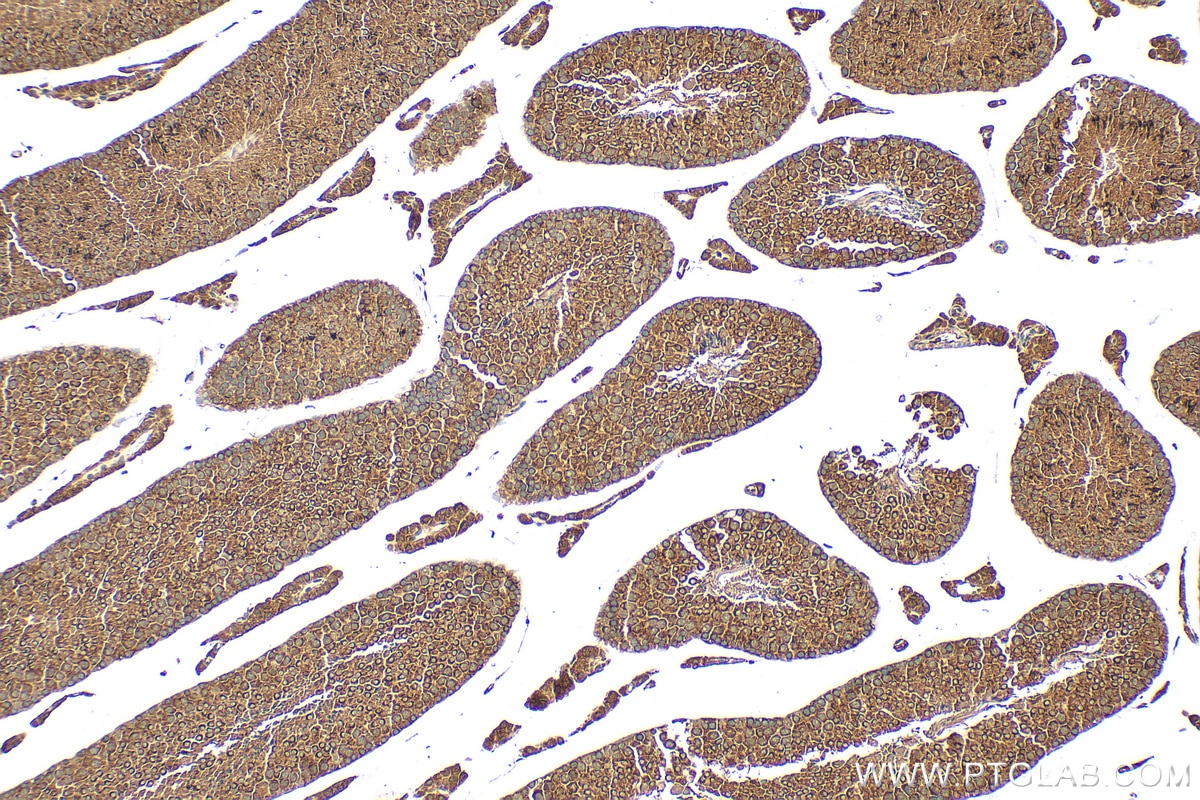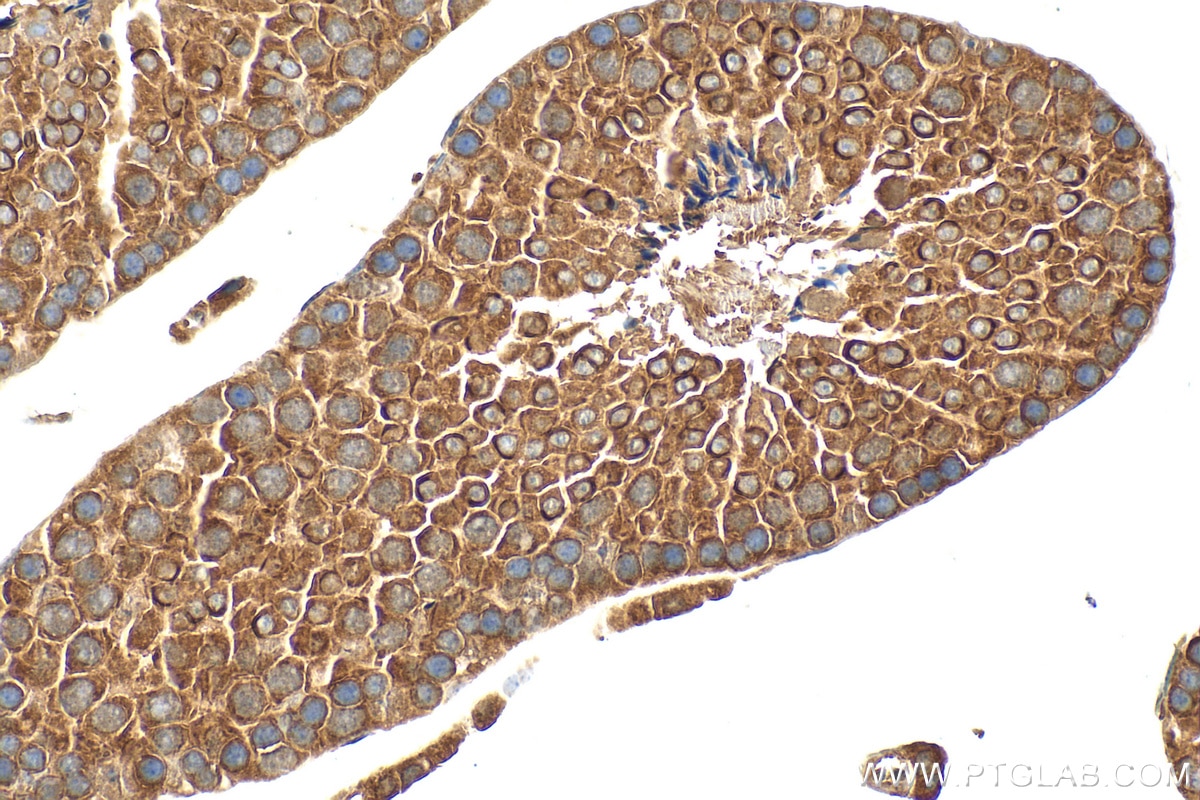Tested Applications
| Positive IHC detected in | mouse testis tissue Note: suggested antigen retrieval with TE buffer pH 9.0; (*) Alternatively, antigen retrieval may be performed with citrate buffer pH 6.0 |
Recommended dilution
| Application | Dilution |
|---|---|
| Immunohistochemistry (IHC) | IHC : 1:50-1:500 |
| It is recommended that this reagent should be titrated in each testing system to obtain optimal results. | |
| Sample-dependent, Check data in validation data gallery. | |
Product Information
31203-1-AP targets SEMG2 in IHC, ELISA applications and shows reactivity with human, mouse samples.
| Tested Reactivity | human, mouse |
| Host / Isotype | Rabbit / IgG |
| Class | Polyclonal |
| Type | Antibody |
| Immunogen | SEMG2 fusion protein Ag35285 Predict reactive species |
| Full Name | semenogelin II |
| Calculated Molecular Weight | 65kDa,582aa |
| GenBank Accession Number | NM_003008.2 |
| Gene Symbol | SEMG2 |
| Gene ID (NCBI) | 6407 |
| Conjugate | Unconjugated |
| Form | Liquid |
| Purification Method | Antigen affinity Purification |
| UNIPROT ID | Q02383 |
| Storage Buffer | PBS with 0.02% sodium azide and 50% glycerol, pH 7.3. |
| Storage Conditions | Store at -20°C. Stable for one year after shipment. Aliquoting is unnecessary for -20oC storage. 20ul sizes contain 0.1% BSA. |
Background Information
SEMG2 genes belong to the family of cancer-testis antigens (CTAs), whose expression normally is restricted to male germ cells but is often restored in various malignancies. SEMGs were found expressed in various malignancies including prostate, lung, and renal carcinoma, as well as in some blood neoplasms (PMID: 33311447).
Protocols
| Product Specific Protocols | |
|---|---|
| IHC protocol for SEMG2 antibody 31203-1-AP | Download protocol |
| Standard Protocols | |
|---|---|
| Click here to view our Standard Protocols |





